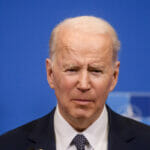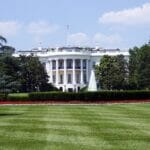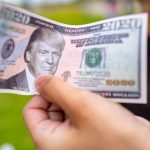While OPEC production cuts could slow the plunge of Nigerian naira, the real headwinds are ahead, thanks to the impending Fed rate hike, the incoming Trump administration and US dollar as the new fear index.
In Africa, some 14 countries have been using the CFA franc that is pegged to the euro, while three have been pegged to the South African rand. Before the Trump triumph, the conventional wisdom was that as the US dollar would weaken against the euro in the short term, this will reduce inflationary pressures in these countries. However, skeptics argued that inflationary pressures were already low in most countries with a euro peg and a stronger currency would affect their competitiveness.
The post-US election conventional wisdom deems that a Trump presidency may strengthen the so-called ‘safe-haven currencies,’ including the euro and the yen, in the short term, whereas emerging market currencies will come under pressure. That, in turn, would mean raising inflationary pressures while boosting competitiveness in those countries that have more liberalized exchange-rate systems.
Yet, the realities are more complex and less promising.
African currency turmoil
In South Africa, political turbulence and international pressures have been reflected in the whip-sawing of its currency. In the past, rand exemplified the hopes associated with the BRICs economies. Today, it has been hit almost as hard as Mexican peso in the aftermath of the Trump triumph.
While fairly stable this year, Ghana’s cedi has been struggling the past few weeks, surging to 4.20 to US dollar compared to 4.04 only a while back. Kenyan shilling is expected to weaken, due to rising dollar demand from importers. In Uganda, the shilling has been hit by weak foreign demand.
Ever since 2009 and the global crisis, Zimbadwe has used the US dollar to replace its own failed dollar, along with rand, the euro and the Chinese renminbi. Only days ago, Zimbadwe rolled out a ‘bond notes’ currency, kind of surrogate dollars, to avoid a cash crunch, despite warnings that it could cause hyperinflation and undermine the rule of the 92-year old Robert Mugabe.
Like Nigeria, Angola, another major African oil exporter, has pegged its currency with the US dollar. As its budget deficit is likely to climb to 5% during the next five years, the national currency kwanza will lose value against the US dollar. In the official market, kwanza has almost doubled in the past four years to almost 166 to US dollar. Thanks to low oil prices, the difficulties to obtain the US currency are increasing, while the disparity with the exchange rate on the black market is likely to remain high.
The plunge of naira
Nigeria is in no way immune to foreign-exchange headwinds. After the summer devaluation of the official rate, the naira fell from about N200 to $1 to almost N300. Although official rate remains around N315, the black market rate has climbed from N350 in mid-summer to N480.
Typically, the plunge is explained by the eclipse of the commodity super-cycle, particularly the fall of oil prices ever since spring 2014. As long as Nigeria is inadequately diversified and dependent on oil revenues, which account over 90% of export revenues, any decline in dollar-denominated oil prices means the fall of naira.
An emerging economy needs foreign exchange to finance investment and growth. Consequently, the willingness to import at the expense of exports and preference for foreign products, has amplified the challenges. Furthermore, with the abuse of public funds, collective assets morph into dollars, which are then parked in private foreign dollar accounts, which compounds naira’s depreciation. Finally, the confidence of foreign investors, which began to fall in the Jonathan era, has continued to deepen.
Recently, the Organization of Petroleum Exporting Countries (OPEC) agreed to reduce oil production by around 1.2 million barrels per day, starting in January 2017. In Nigeria, the production is up to 1.9 million barrels and could rise to 2.2 million. As a result of the proposed cuts, oil prices are expected to climb from $50 to $60, which has a potential to alleviate Nigeria’s malaise to a degree. As Nigeria along with Libya were exempted from the OPEC cut, observers hope that this gives time to resolve the Niger-Delta crises.
However, the hopes associated with the production cuts must go hand in hand with the anticipated US Federal Reserve rate increase in December and President-elect Trump’s expressed desire to toughen American trade and currency policies.
Rising US dollar, rising global risks
In Africa, foreign-exchange volatility has escalated since the embrace of ultra-low rates and quantitative easing by central banks in major advanced economies in 2009-10. With the Fed rate hike, turmoil is about to enter a new stage.
Along with other emerging market currencies, the naira must cope with the US dollar, which recently hit a 14-year high, driven by rising US bond yields, expectations of a Trump fiscal stimulus and the impending Fed rate hike. In the process, Asian currencies suffered a sell-off and so did many currencies in the Americas and emerging markets overall. African currencies, including Nigerian naira, must also cope with US dollar’s growing risk in the world economy.
Before the 2008-9 financial crisis, there was still a close correlation between leverage and the volatility index (VIX). When the VIX was low, the appetite for borrowing went up, and vice versa. That correlation no longer prevails, due to years of ultra-low rates and rounds of quantitative easing by advanced economies central banks.
Recently, the Bank for International Settlements (BIS) reported that the US dollar has replaced the volatility index as the new fear index. As the VIX’s predictive power has diminished, US dollar has become the indicator of risk appetite and leverage. This dynamic has distressing implications because it has pushed international borrowers and investors toward the dollar.
Yet, US fundamentals are eroding, as President-elect Trump himself has acknowledged. US sovereign debt has soared to $20 trillion, while in the past year foreign central banks sold almost $375 billion in Treasuries. In these conditions, the Fed rate hikes could boost the US dollar as a kind of a global Fed funds rate, which would result in dollar tightening and deflationary constraints. That, in turn, could impair emerging economies that today fuel the global growth prospects.
Such a scenario has potential to unleash a chorus of criticism of the current dollar-based system, particularly in the BRICs economies. Like the economist Keynes in the 1940s, they argue that the fundamentals of the US economy do not support US market valuations and US dollar – not to speak of international markets and currencies.
What’s good for the US dollar is no longer that good for the world economy.
Dr Steinbock is the founder of Difference Group and has served as research director at the India, China and America Institute (USA) and visiting fellow at the Shanghai Institutes for International Studies (China) and the EU Center (Singapore). For more, see http://www.differencegroup.net/
The original version was released by BusinessDay Nigeria, Nigeria’s largest business daily, on December 5, 2016.











